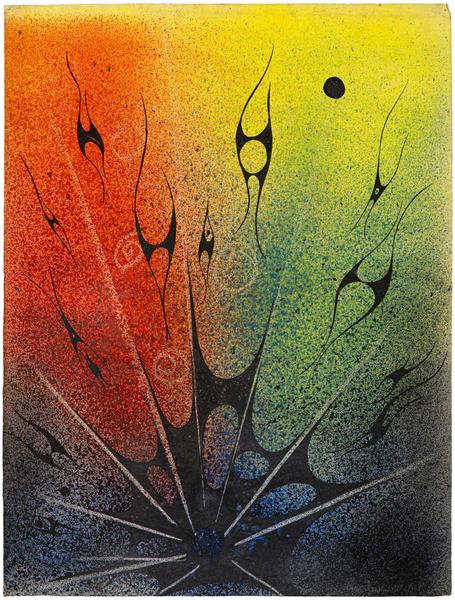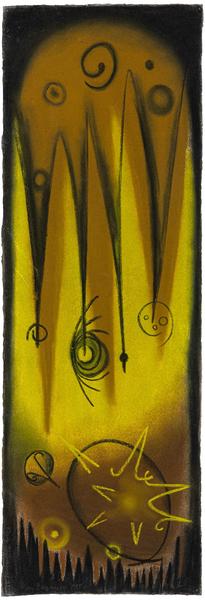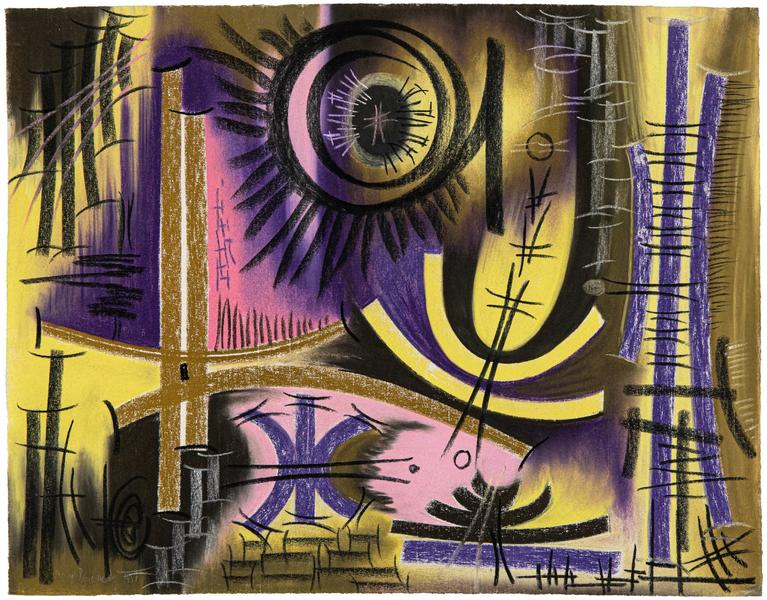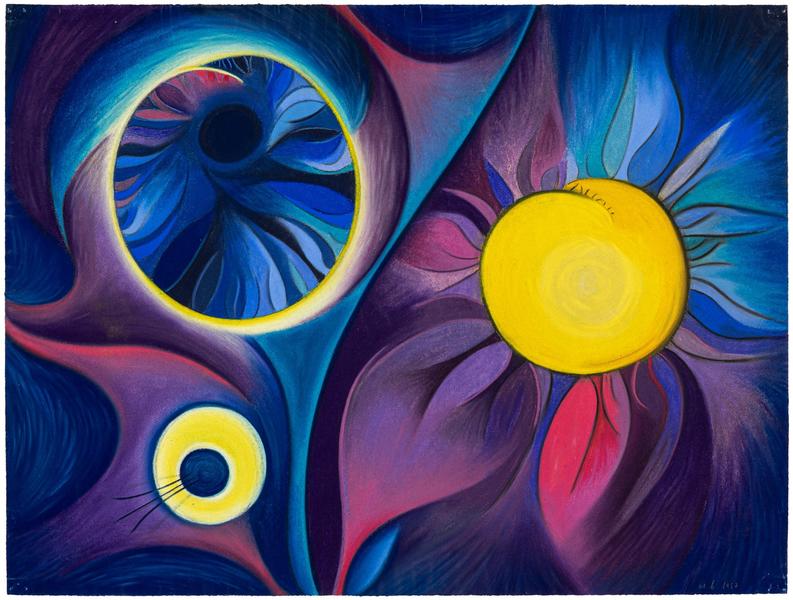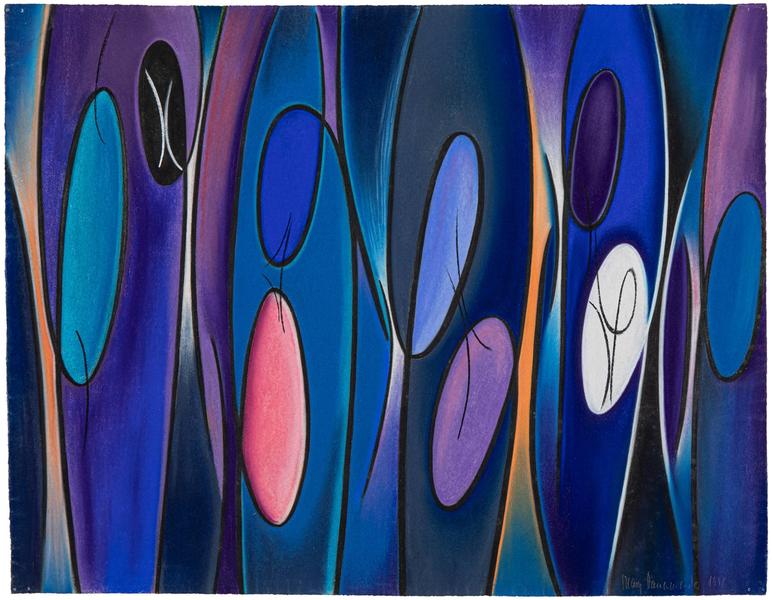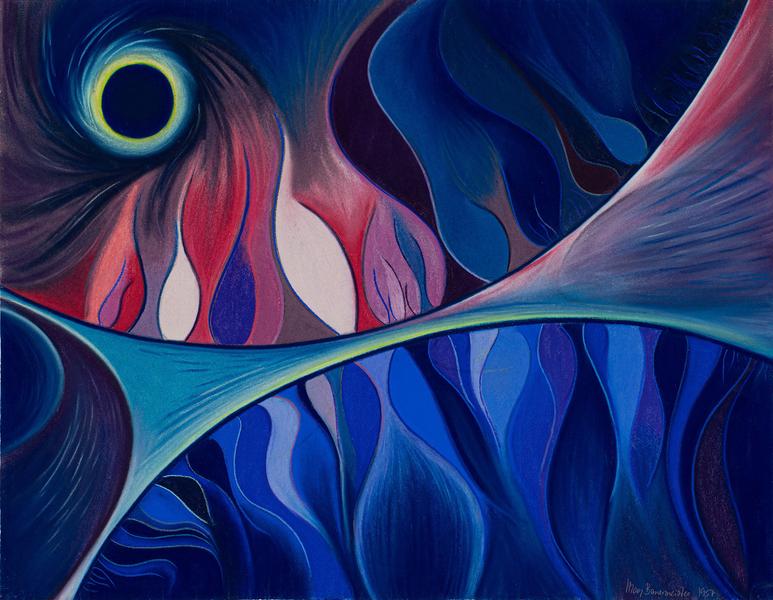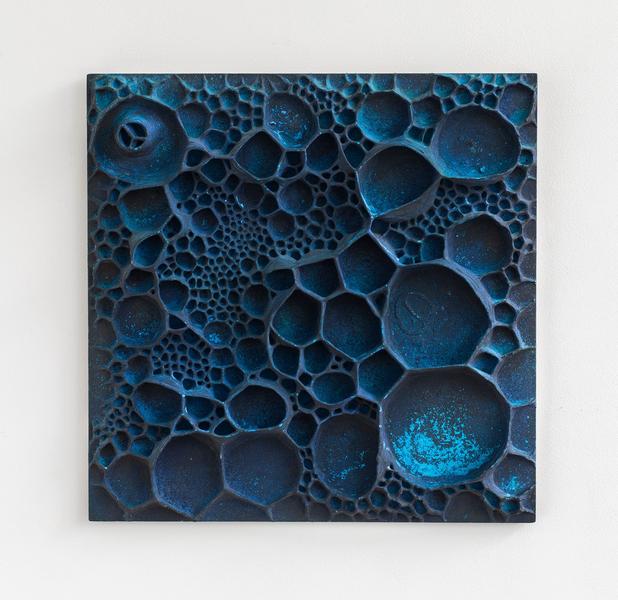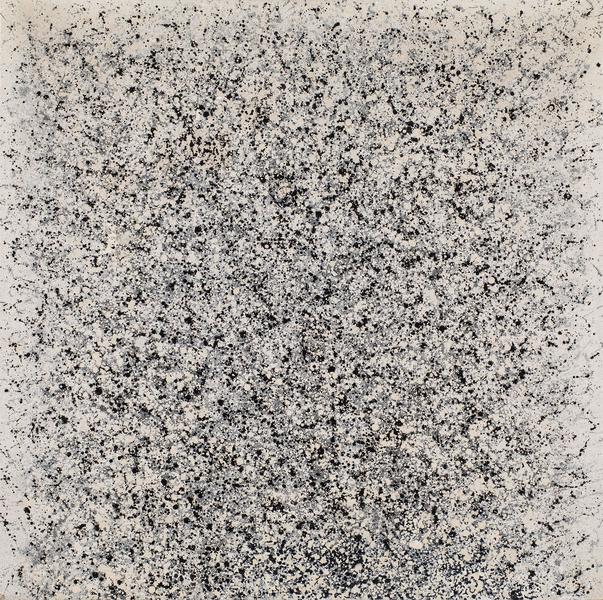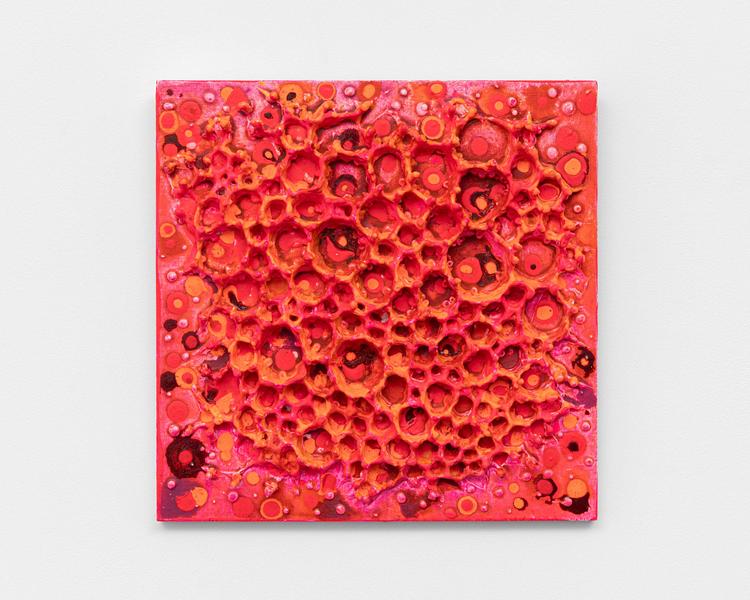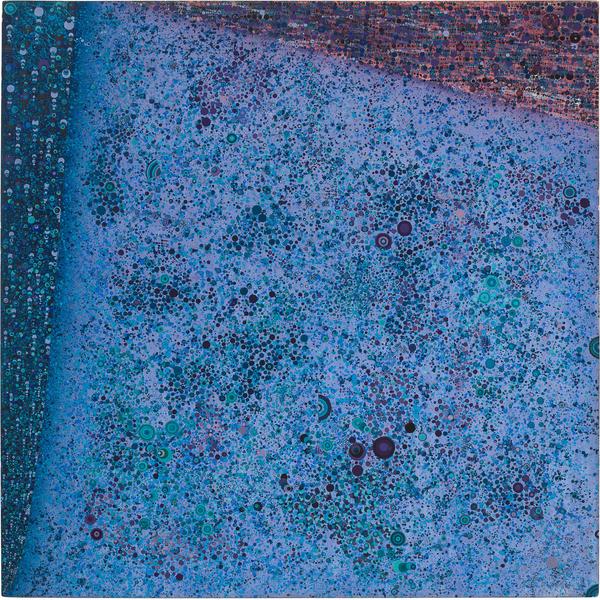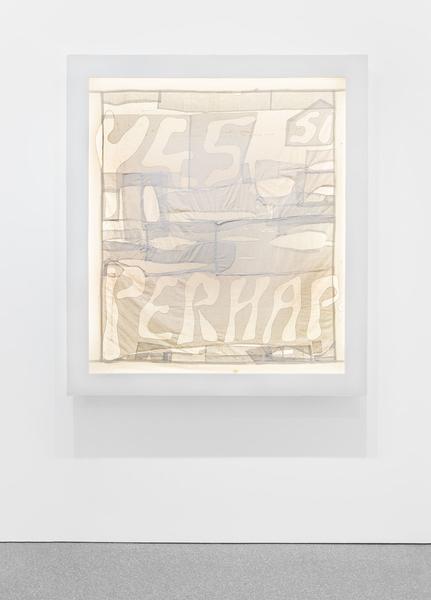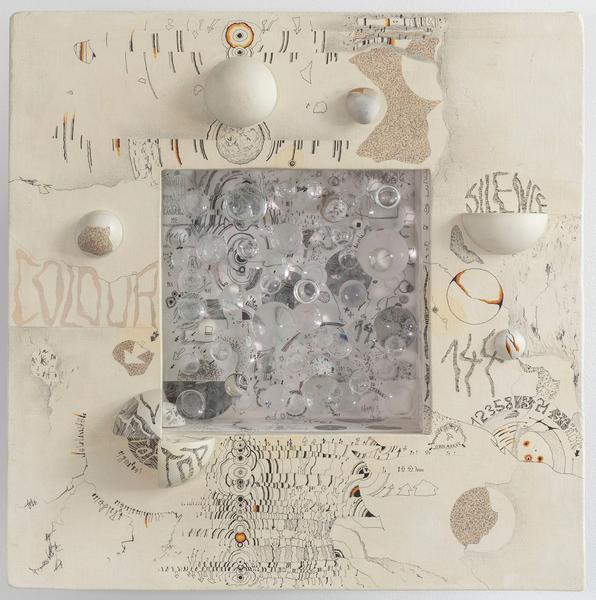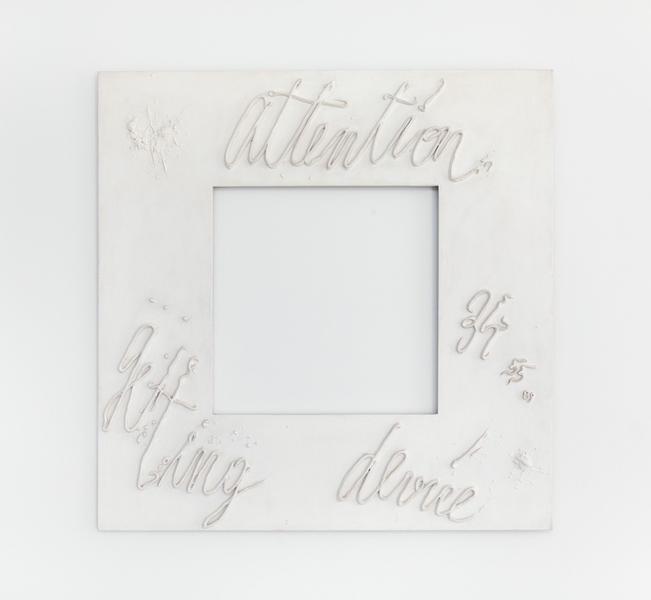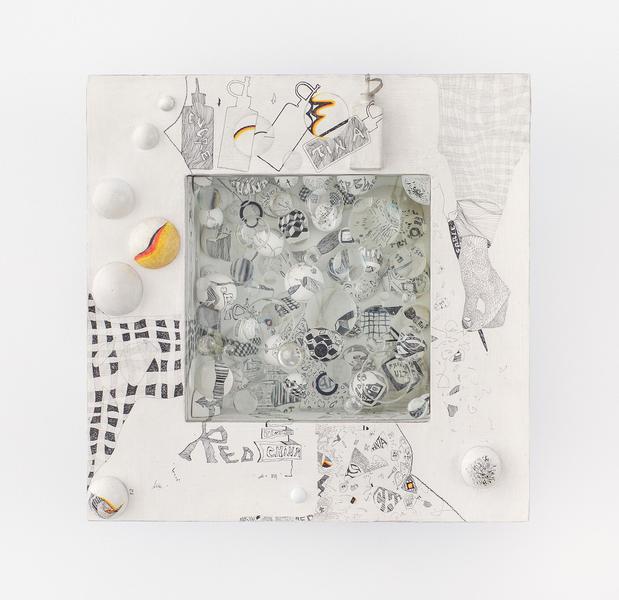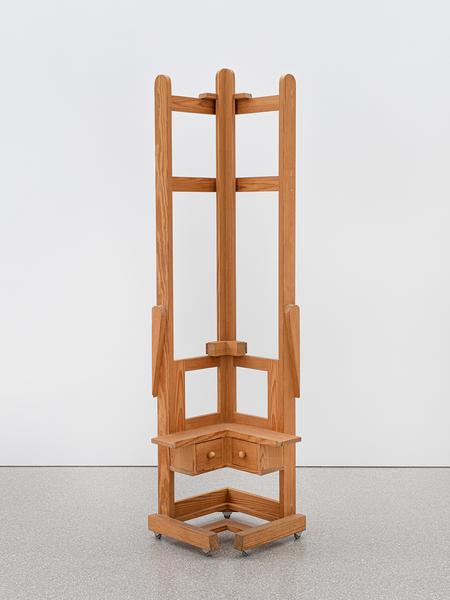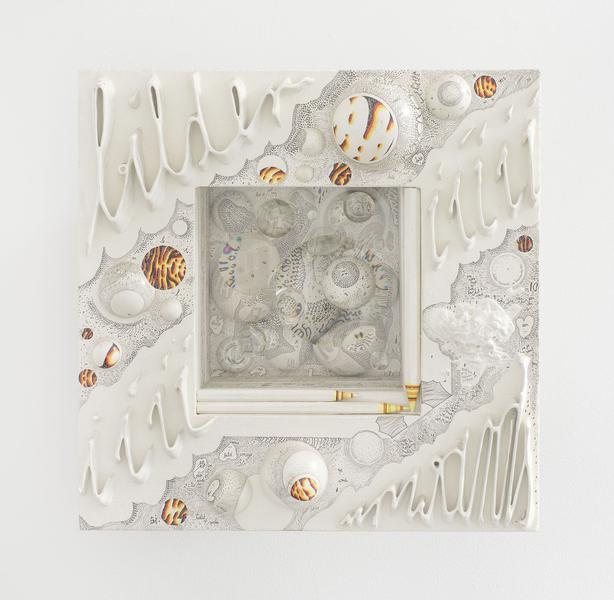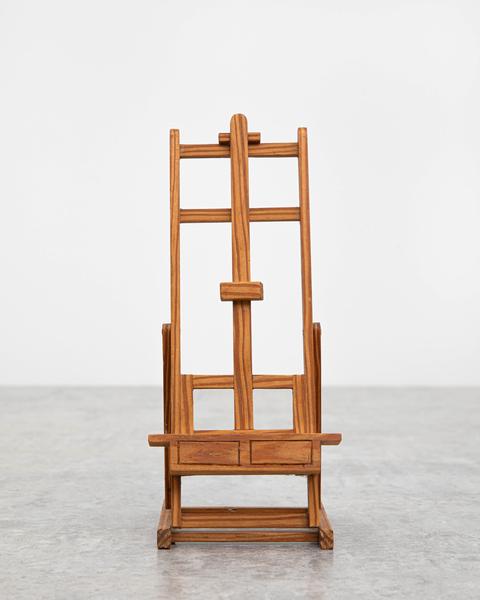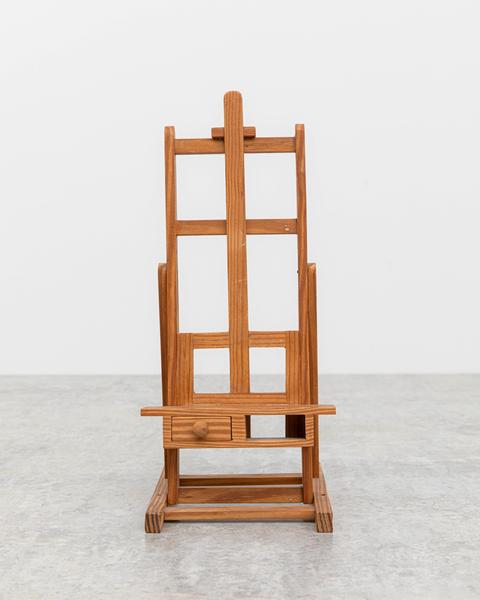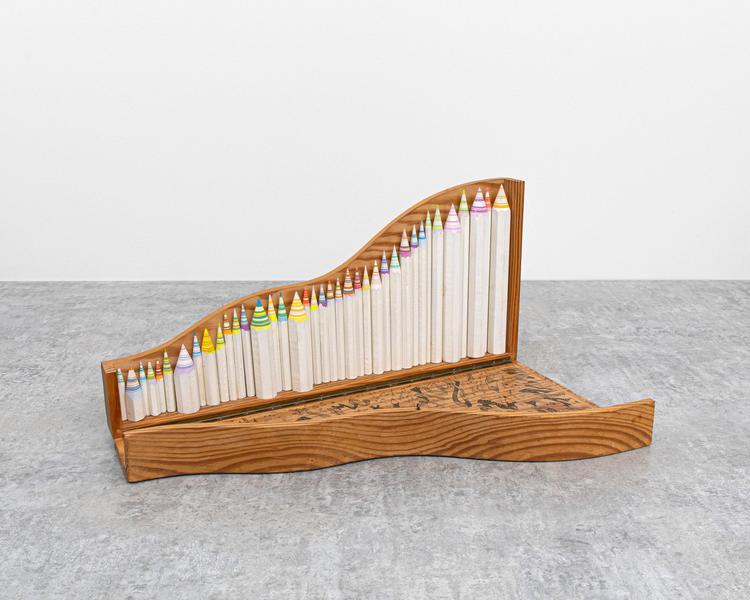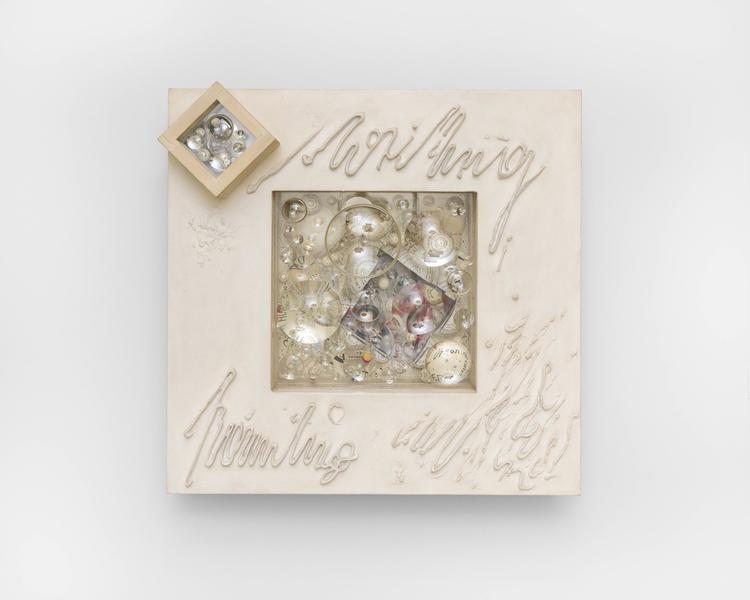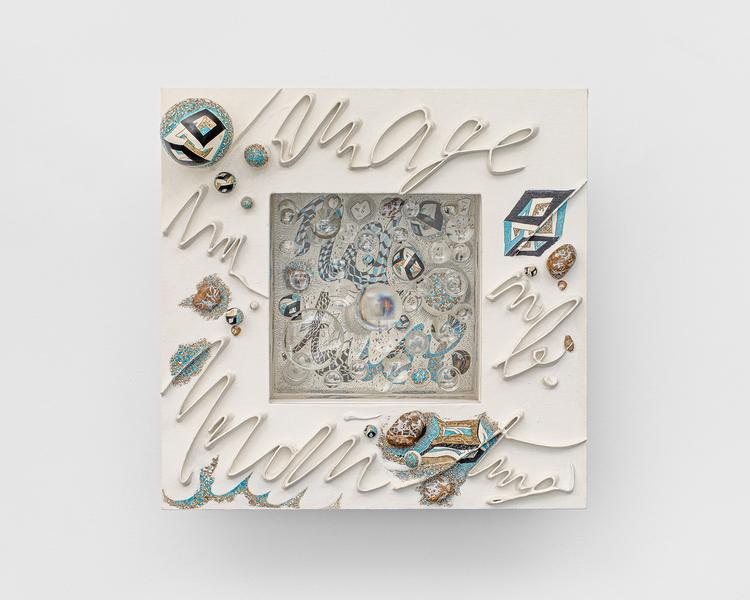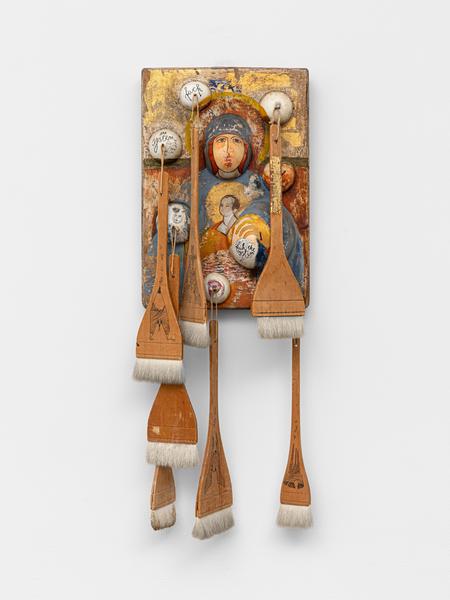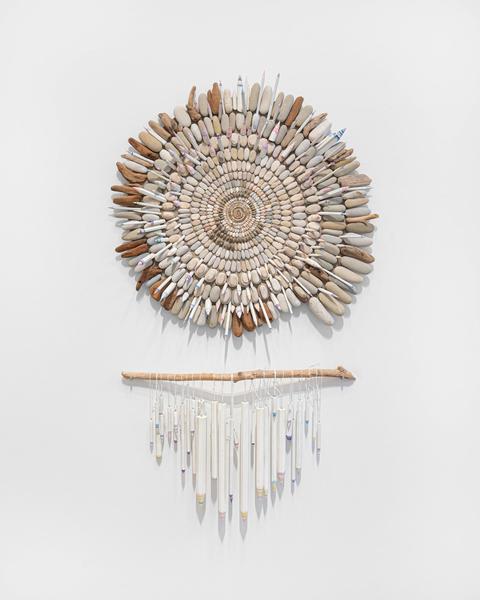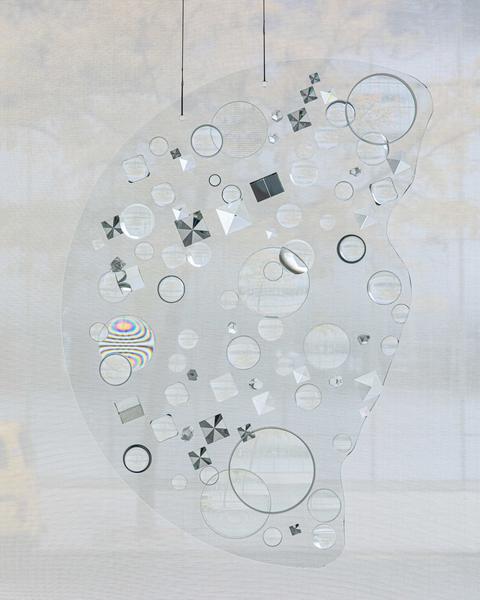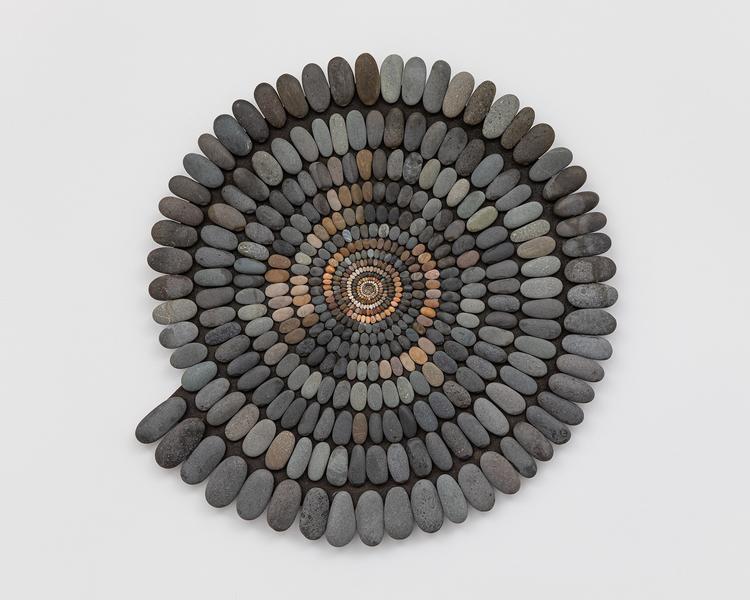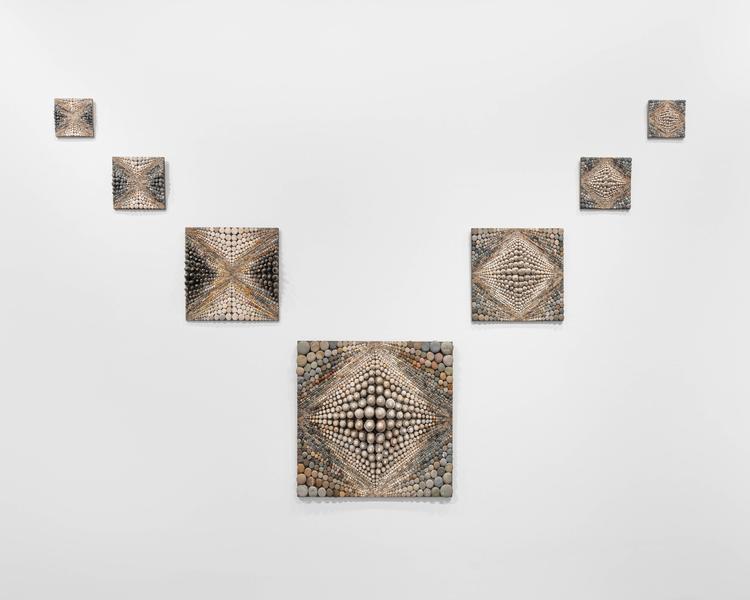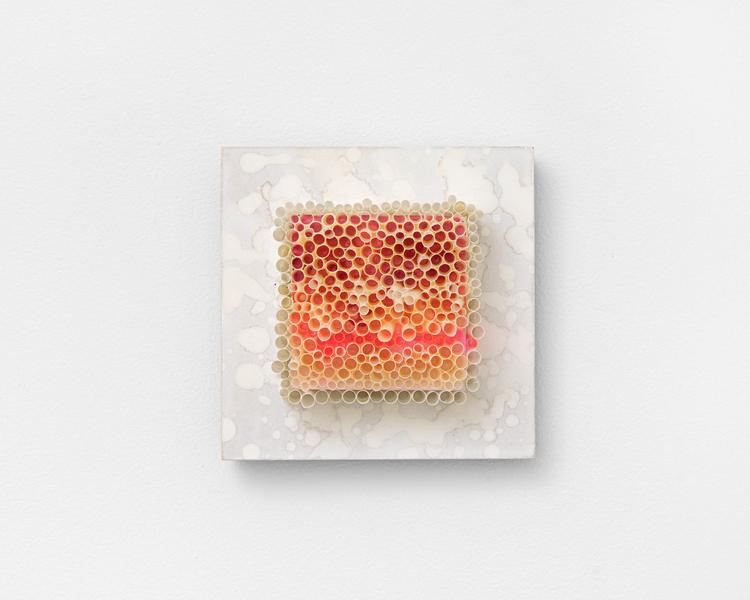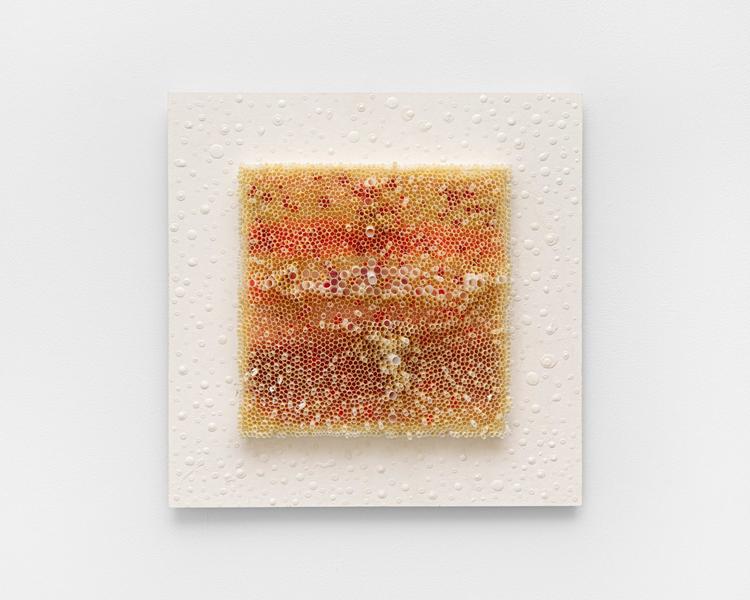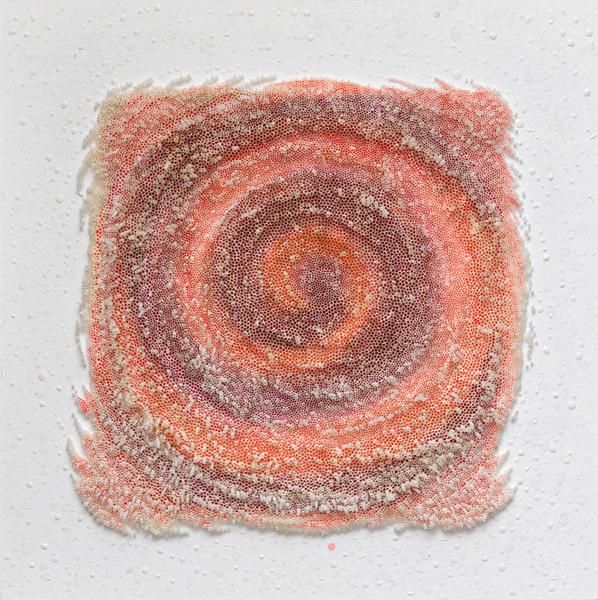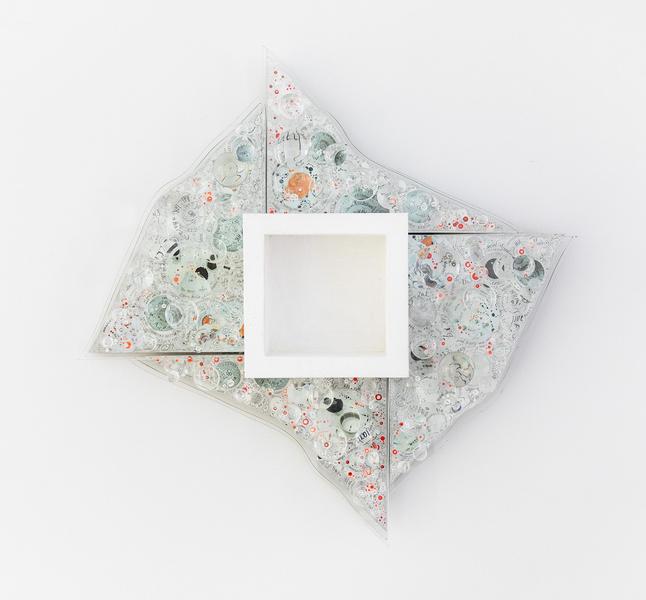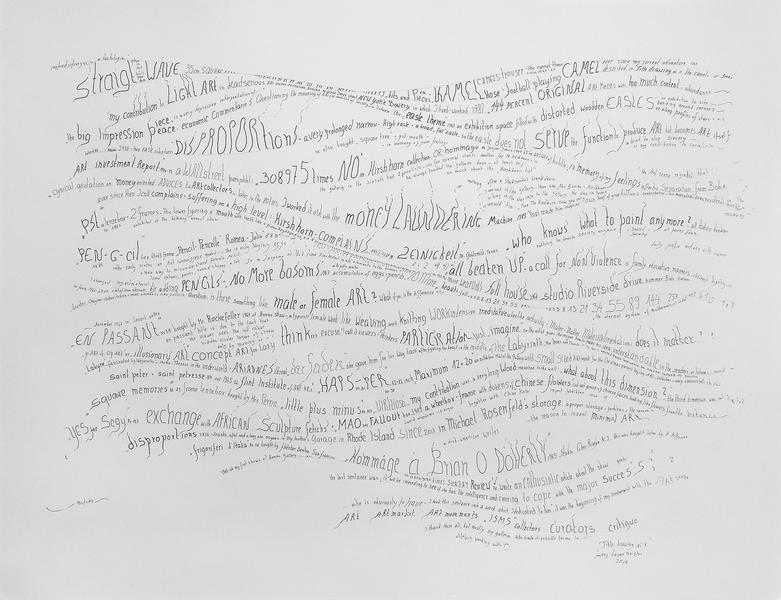“I could never execute the Madonna picture if I titled it in German—the work is named Fuck the System—that doesn’t work in German but in American English it’s more casual, and the Madonna personifies ‘fuck the system.’ She is the first iconic, revolutionary feminist whose immaculate conception we still celebrate today; she is a glimpse into the future, she is a woman of the future…”[1]
—Mary Bauermeister
Michael Rosenfeld Gallery is pleased to present Mary Bauermeister: Fuck the System, a memorial exhibition organized in collaboration with the artist’s family. The first solo exhibition to open since her passing in March 2023, Fuck the System surveys the diverse, interdisciplinary oeuvre Bauermeister executed across seven decades.
Taking its title from an assemblage executed at a key turning point in Bauermeister’s career, Fuck the System features works from each of her major series, including examples of rarely exhibited pastels, light boxes, and easel sculptures. A child of totalitarian Germany who rejected the Constructivist mandates of the country’s postwar schools of art and design, Bauermeister’s art and worldview were explicitly anti-tradition from the beginning of her career. The artist’s fascination with paradox and its potential to reveal fissures in the foundations of entrenched conventions is apparent throughout her work, which both embodies and challenges contradictory binaries, often vacillating between uncontrolled apostrophe and methodical structure, Zen-like serenity and impassioned rage, introversion and extroversion. This fluid approach to thinking about art manifests in a variety of ways; many of her works deal with the nature of optical and ideological perception while approaching the trappings of established hegemonies and contemporary trends with equal skepticism.
Fuck the System will constitute the first public exhibition of Bauermeister’s earliest mature body of work, a series of abstract, psychedelic pastels dating to the 1950s. These expressive compositions reveal the magnitude of Bauermeister’s limitless imagination, which would soon nurture the environment where the first Fluxus happenings took place between 1960 and 1961 in her Cologne studio. The avant-garde that gathered there included John Cage, Christo, Merce Cunningham, Nam June Paik, David Tudor, and others who would go on to form a vanguard scene of musicians, dancers, and performance artists who thrived in New York throughout the 1960s, a milieu now known as Neo-Dada.
Though a majority of the works Bauermeister produced between 1957 and 1962 are material in nature—in contrast to Neo-Dada’s emphasis on ephemeral, time-based art—they nevertheless reflect a philosophy advanced by Cage and carried on by his disciples, in which any perceptible boundaries between art, nature, and lived experience are rejected in favor of a holistic creative enterprise wherein all three arise and interact within the same realm. Fuck the System will feature two standout examples of Bauermeister’s honeycomb pictures, in which casein or a synthetic paste is layered atop a support and impressed with rhythmic motifs, recalling the tessellations of its namesake, pockmarks on the surface of the moon, and droplets of rain breaking the surface of a pool of water. Other works from this period include “dot pictures” which, at first glance, appear to be splatter paintings in the vein of gestural tachisme, but closer consideration reveals countless deliberately placed circles of pigment that variously condense and disperse across the canvas, often resembling views of deep space or microbes drifting about a solution on a microscope slide. As curator Kristen Skrobanek has observed, these works indicate infinite expansion into micro- and macrocosmic realms,[2] a line of thinking that would spawn several of Bauermeister’s most critically acclaimed and widely exhibited series, such as her plastic straw pictures, lens boxes, and stone assemblages, all of which carry on the themes of aggregation, sequential progression, and a deliberate confusion between manmade and natural materials, found and fabricated objects.
Bauermeister’s artistic innovations in these years led to her first museum exhibition in 1962, organized by legendary museum director Willem Sandberg for the Stedelijk Museum in Amsterdam. The exhibition would be prodigious for Bauermeister, as it brought about her conception of the lens boxes: “The night before the opening,” Bauermeister remembered, “I dreamt that each of my paintings was a walk-in space. I essentially walked into my paintings, and so later I started to build boxes.”[3] Another momentous outcome of the Stedelijk exhibition was Bauermeister’s decision to move to New York, which was inspired by her exposure to the work of Robert Rauschenberg and Jasper Johns in an exhibition Sandberg curated concurrent with her own solo show; convinced that the city could offer her an environment of artistic freedom Germany could not, Bauermeister began what would become a ten-year residence in New York in October 1962. She enjoyed nearly immediate success in New York, obtaining representation by Gallery Bonino in 1963 and witnessing the acquisition of her works by the Museum of Modern Art, the Solomon R. Guggenheim Museum, and the Whitney Museum of American Art the following year.
Bauermeister’s productivity accelerated in the wake of these successes, and she readily expanded her established series while initiating new ones, such as the “Lichttücher,” or, “light sheets,” wherein scraps of found linen are sewn into abstract geometric patterns or words, after which the cloth is mounted to a lightbox. Indeed, light is a central component in Bauermeister’s oeuvre both conceptually and in practice; she cultivated a nearly career-long interest in crystallography, and her most widely exhibited series of works, the lens boxes, array magnifying lenses of various sizes and strengths within and outside of wooden boxes that usually frame a drawn or painted composition. As art historian Wilfried Dörstel has observed, “Each of her works records, as it were, the passage of a moving, changing systemic event, whose beginning and end we don’t know – an infinite and intense moment, and a passage also in the sense that immaterial matter passes through matter, light through glass or lenses, cosmic through terrestrial, the invisible through the visible.”[4] In addition to implicating the continually fluctuating nature of human perception, Bauermeister’s lens boxes exemplify the combination of image and object that characterizes much of her work, yet they do so without affirming the obsolescence of two-dimensional art—rather, they bring it into the third dimension, and thus the contemporary world.[5]


